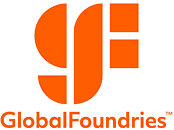Worldwide Semiconductor Revenue Declined 11% in 2023, Intel Reclaims No. 1 Spot
Worldwide semiconductor revenue in 2023 totaled $533 billion, a decrease of 11.1% from 2022, according to preliminary results by Gartner, Inc.
"While the cyclicality in the semiconductor industry was present again in 2023, the market suffered a difficult year with memory revenue recording one of its worst declines in history," said Alan Priestley, VP Analyst at Gartner. "The underperforming market also negatively impacted several semiconductor vendors. Only 9 of the top 25 semiconductor vendors posted revenue growth in 2023, with 10 experiencing double-digit declines."
The combined semiconductor revenue of the top 25 semiconductor vendors declined 14.1% in 2023, accounting for 74.4% of the market, down from 77.2% in 2022.
"While the cyclicality in the semiconductor industry was present again in 2023, the market suffered a difficult year with memory revenue recording one of its worst declines in history," said Alan Priestley, VP Analyst at Gartner. "The underperforming market also negatively impacted several semiconductor vendors. Only 9 of the top 25 semiconductor vendors posted revenue growth in 2023, with 10 experiencing double-digit declines."
The combined semiconductor revenue of the top 25 semiconductor vendors declined 14.1% in 2023, accounting for 74.4% of the market, down from 77.2% in 2022.



























